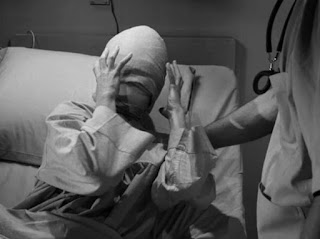By Michael Lyons
There are few TV shows that are truly timeless. Few that involve themes and messages that are scarily more relevant today, then they were when they debuted. Few that become even more dramatic and compelling as time goes on.
“The Twilight Zone” is all of these. Host, creator and writer Rod Serling’s anthology series that cloaked comments on society and humanity in the guise of science fiction, fantasy and horror still stands as one of the most original and creative TV shows ever to grace the small screen.
If you’ve never ventured into the “Zone,” or its been a while since you have, here is a “Twilight Zone” Trilogy that can serve as a primer for new or returning viewers.
“The Monsters Are Due on Maple Street.” Originally aired March 4, 1960
It’s summer time in suburbia and for the residents of Maple Street, a day like any other, until a shadow crosses the sky, accompanied by a flash and a strange sound. This is followed by a power outage, that impacts not just electricity, but cars and phones as well.
As the neighbors gather to determine what is happening, a young boy starts comparing what’s going on in the neighborhood to stories of an alien invasion that he has read about. Soon, rational thought starts shifting to a mindset in which each neighbor not only believes that the power outage was caused by aliens, but that, possibly, any of them may be an alien in disguise.
Paranoia soon spreads like wildfire, as violence erupts with neighbor against neighbor, culminating in the standard “Twilight Zone” twist ending. Starring veteran character actors Claude Akins and Jack Weston, this episode not only creates a viscerally compelling half hour, but one with a powerful message, as Serling sums up in the episodes conclusion:
“The tools of conquest do not necessarily come with bombs and explosions and fallout. There are weapons that are simply thoughts, attitudes, prejudices– to be found only in the minds of men. For the record, prejudices can kill– and suspicion can destroy– and a thoughtless frightened search for a scapegoat has a fallout all of its own– for the children– and the children yet unborn. And the pity of it is– that these things cannot be confined... to the Twilight Zone.”
“The Eye of the Beholder.” Originally aired November 11, 1960
This episode is one of TV’s most original half hours, both in its execution and conclusion. Using unique camera angles, “Eye” tells the story of a patient named Janet Tyler, who is in a hospital for her eleventh plastic surgery. The surgery is to repair her face that is, as one doctor describes, a “pitiful, twisted lump of flesh.”
Eager to see if the surgery was a success, Janet asks the doctor and nurses to remove the bandages early. They agree, removing the dressing, only to find that the surgery has once again failed...but what follows is another of “The Twilight Zone’s” trademark twist endings (and one of the series’ most famous).
This time, the twist ending is not just surprising, its poignant, as this episode, beautifully written by Serling and directed by TV veteran Douglas Hayes, utilizes the conclusion to comment on our appearance-obsessed world.
“Time Enough at Last.” Originally aired November 20, 1959
In this gripping “What if?” Episode of “The Twilight Zone,” Burgess Meredith stars as Henry Bemis, a mild mannered bank teller who is also a voracious bookworm. His real escape in life is reading. In fact, he takes his lunch break in the quietest place in the bank, the vault, where he can quietly get lost in a book.
On this particular day, while reading in the vault, a nuclear bomb is detonated outside, knocking Henry unconscious. He emerges later to find himself in a now ruined world. Being in the vault saved his life.
Lost in despair and at his wits end, now realizing he is the last man on Earth, Henry soon finds hope in the ruins of a local library. Here, he comes across enough books to fill several lifetimes worth of reading. Henry is stacking the books up and planning his days ahead when an accident with tragic consequences happens.
One of the more heartbreaking episodes of “The Twilight Zone” (which was actually mentioned by Albert Brooks in the opening prologue of 1983’s “Twilight Zone: The Movie”), “Time Enough at Last” was not only a comment on the dangers of a solitary life, it also forces the viewer to ask the age old “What would I do?’ Question.
And so, as Mr. Serling himself would have said:
“Submitted for your approval, these three episodes from a TV series, the likes of which haven’t been seen since. Three episodes that are proof positive as to how this show remains part of our lexicon and our pop culture consciousness. Three episodes of a show that dared to test the boundaries of television in its earliest days.
A warning though to all reading this, watching these episodes, like all in this series, could cause a serious addiction to...
...”The Twilight Zone.”
Sources: “Dimensions Behind The Twilight Zone: A Backstage Tribute to Televisions’ Groundbreaking Series” by Stewart T. Standard
IMDb
Wikipedia














No comments:
Post a Comment